If there is one thing that brings terror to tomato growers, it’s late-season tomato blight. This fast-acting fungal disease starts from the ground up and quickly takes over tomato plants almost without warning.
When the cooler temperatures of late summer and fall arrive, the chances of late-season blight rise drastically. What starts out as a few small light brown spots on the lower leaves quickly turns into an overall plant issue before you know it – often causing a total loss in the end.
Not only will blight affect the plant showing damage, but it can also spread to other nearby tomato plants. In fact, tomato blight can affect all types of nightshade crops like peppers, eggplants, and potatoes.
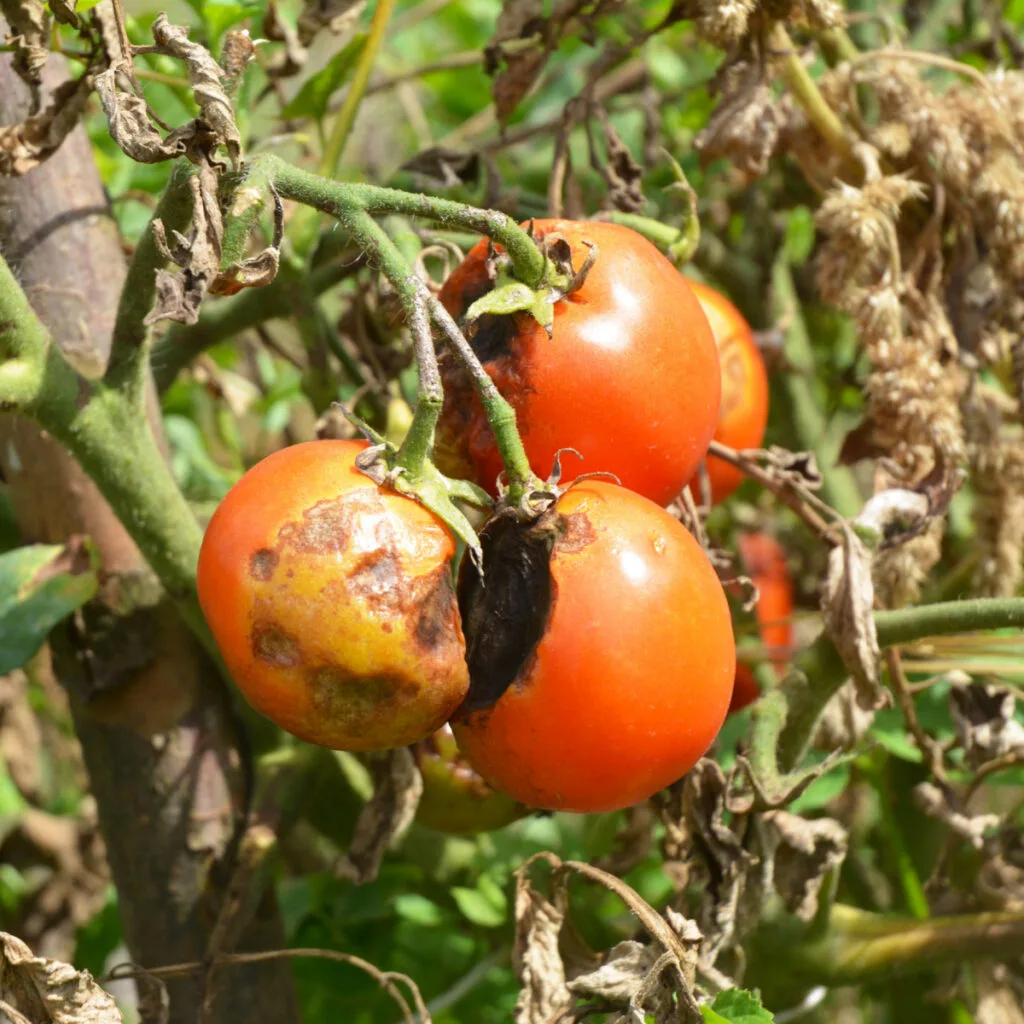
So can you really do anything once tomato blight starts to take hold? Possibly! There are actually a few steps you can take to help slow down or maybe even stop tomato blight altogether.
The key is to act fast and take action as soon as the first signs of blight appear. Without quick interference, late-season tomato blight will mark the end of your tomato harvest – and possibly spell trouble for next year’s harvest as well!
What Is Late-Season Tomato Blight?
Tomato blight is a fungal disease that is spread through spores in the soil. These spores land on the tomato foliage by a few different means and then start to take hold.
The sports can easily be splashed onto lower foliage when it rains or when you water your garden. In addition, spores can also be transferred by the winds or even carried by insects and animals.
The problem with blight is that once it is in your soil, it is hard to eradicate. Not only will it affect plants growing in the garden this year, but in future years as well. In fact, blight spores can live in the soil for up to five years!
Identifying Late-Season Tomato Blight Damage
Tomato blight starts out as little dark brown spots on the lower foliage of tomato plants. Before long, the spots start to increase in size and number.
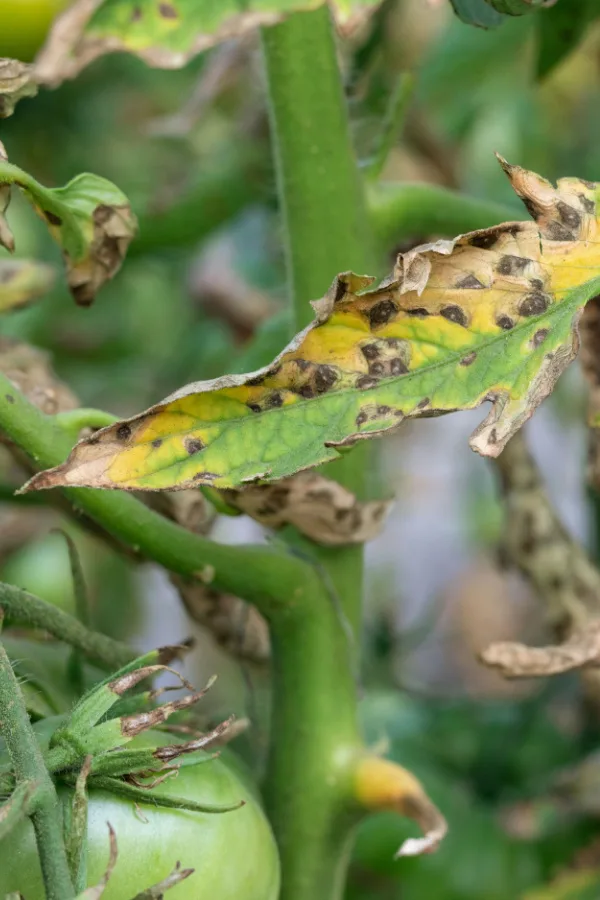
Eventually, the leaves turn completely black and die. They then either fall off the plant or the dead branches just dangle still attached by a dried, shriveled thread.
As the blight starts to creep up the entire plant, the fruit will also get affected as well. Brown or black spots will appear on the tomatoes themselves before they completely rot away altogether.
How To Handle Late-Season Tomato Blight
Preventing blight from occurring in the first place is the best way to keep your plants as safe as possible. However, even if you follow the best guidelines to a “T”, your crops may still become affected.
Because of this, the best way to identify any type of disease or insect damage on your tomatoes and other vegetable crops is to notice it as soon as possible. Make a habit of regularly checking your plants early in the growing season and beyond. Look over each one so you can quickly act if you do see an issue starting.
Removing Damaged Plant Matter Immediately
Once you identify any blight damage, you need to remove it from your garden space immediately. That doesn’t mean you need to trash the whole tomato plant right away. Instead, remove the entire stem or branch that is showing damage, even if it is only on one leaf.
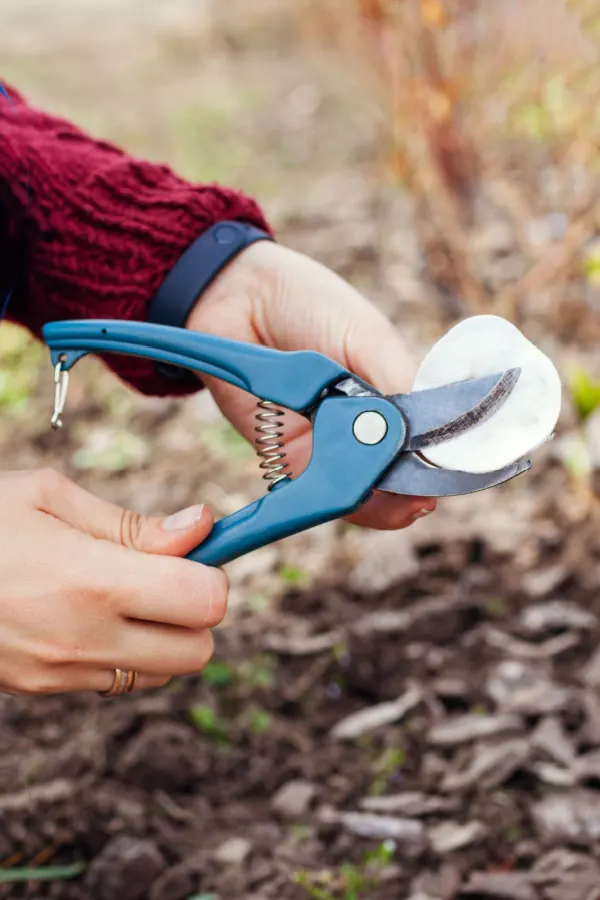
It is very important to disinfect your pruners between each plant when removing diseased foliage. Just dip the blades into a solution of bleach and water, or use a disinfectant wipe between each plant. This simple step will make a big difference in slowing the spread of the disease. (Affiliate Product Link: CleanSmart Disinfectant Spray)
You also need to pick up and remove any diseased leaves or fruit that have fallen to the ground. Allowing it to stay on the soil and rot away will only multiply your issues later on.
Disposing Diseased Materials Properly
Don’t put the damaged plant matter in a corner of your garden or in your yard. Leaving it on your property will only increase the chances of the spores making their way back to your garden next year.
Also, don’t add the foliage to your home compost bins either. Unfortunately, these piles just don’t reach hot enough temperatures to really kill off the blight spores.
Instead, you can burn the plant material in a fire pit, dispose of it in your trash, or take it to a local community composting facility or burn pile for proper disposal.
Additional Steps To Take Now
If you haven’t already, go ahead and mulch around your tomato plants. This simple step is so beneficial to the soil and the nearby plants besides just helping to prevent the spores from splashing onto the plant’s foliage.
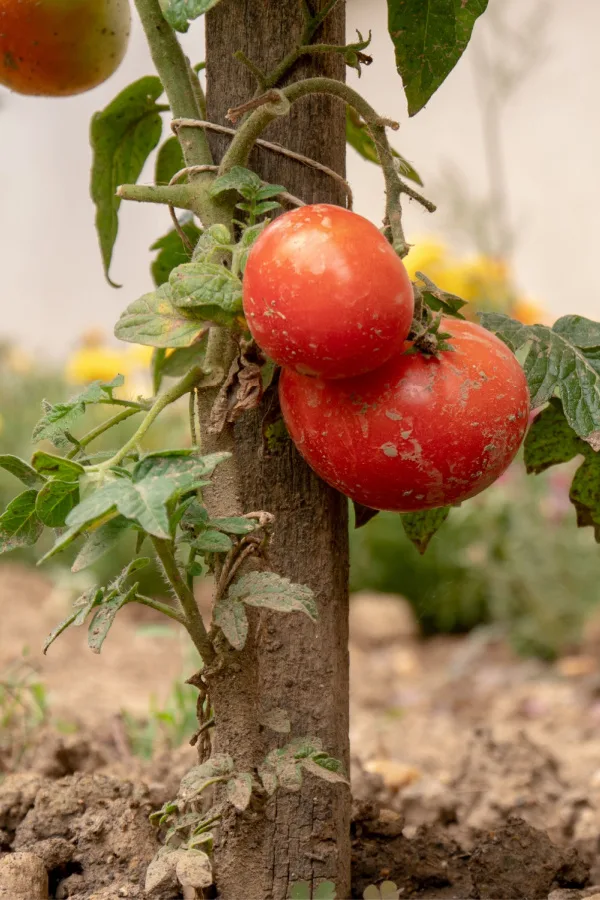
Also, prune your tomato plants well. Remove the bottom 10 to 12 inches of stems. This makes it much harder for the spores to land on the lower foliage after watering or rain. In addition, prune the middle of your plant to allow for better airflow as well.
You can try using a homemade spray to slow the progression of the disease. Simply mix together 1.5 tablespoons of both baking soda and vegetable oil into one gallon of distilled water. Spray this solution onto the tomato plant’s foliage every week and after it rains.
Lastly, only water tomato plants in the morning and slowly at the base of each plant. A drip irrigation system can help to prevent splashing of spores onto the foliage.
If plants become too heavily damaged, remove any unaffected tomatoes to ripen on your countertop and properly dispose of the entire tomato plant. Leaving the plant in your garden will only increase the chances of the spores spreading to other plants.
Looking Ahead For Next Year
Once your tomato plants start to exhibit signs of tomato blight, that means the spores are in your garden soil. In order to prevent blight from attacking your tomato plants next growing season, you need to practice crop rotation.
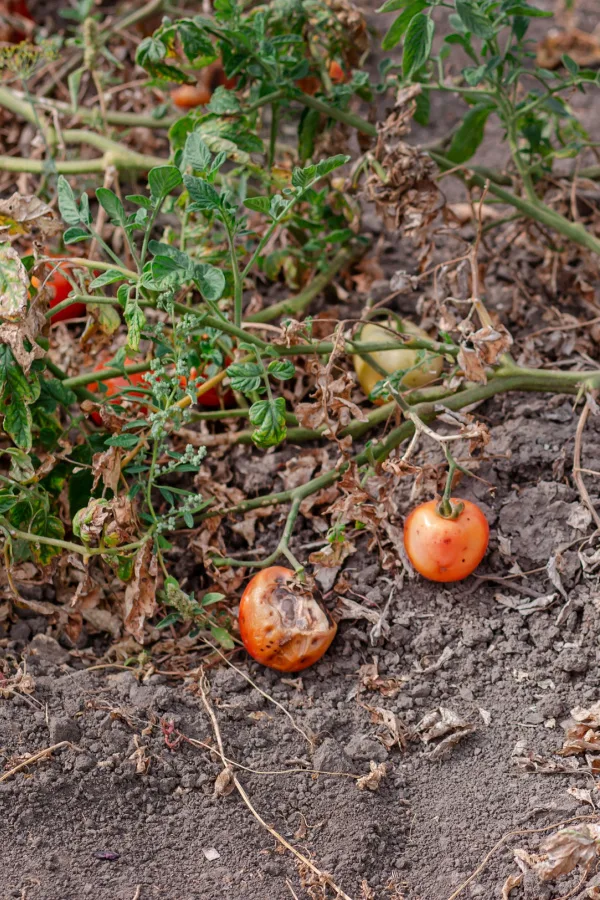
Crop rotation is the method of moving crops around in your growing space so that the same crop is not grown in the same spot twice. Have at least a minimum of three years before you grow tomatoes in the same soil again. Five years would be best though since that is how long blight spores can live.
If this is not an option, you need to remove the diseased soil and replace it with new to hopefully prevent tomato blight from taking hold the following year. This is especially important for the tomato plants grown in raised beds or containers.
Also, avoid planting any other type of nightshade crop in the affected soil. Since they are also susceptible to tomato blight, they can become damaged as well.
By being proactive in the fight against late-season tomato blight and following these simple steps, you can extend your tomato growing season and hopefully prevent blight from affecting plants next year as well!
